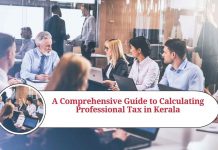Section 115BAC of the Income Tax Act, 1961 is a new section that was introduced by the Finance Act, 2020. This section provides an option for individuals and Hindu Undivided Families (HUFs) to pay tax at a lower rate if they are willing to forego certain exemptions and deductions.
In this blog, we will discuss the provisions of Section 115BAC and how it affects taxpayers.
Who is eligible to opt for Section 115BAC?
Section 115BAC is applicable to individual taxpayers and HUFs who have income from salary, income from a single house property, income from other sources, and income from a business or profession. However, this section is not applicable to taxpayers who have income from capital gains, income from a business or profession in the form of commission or brokerage, or income from any other source that is not included in the above categories.
How does Section 115BAC work?
Under Section 115BAC, taxpayers have the option to choose between two tax regimes – the existing tax regime and the new tax regime. The new tax regime offers lower tax rates but at the cost of certain exemptions and deductions. The existing tax regime, on the other hand, allows taxpayers to claim exemptions and deductions, but at higher tax rates.
The tax rates applicable under the new tax regime are as follows:
- Up to Rs. 2.5 lakh – Nil
- From Rs. 2.5 lakh to Rs. 5 lakh – 5%
- From Rs. 5 lakh to Rs. 7.5 lakh – 10%
- From Rs. 7.5 lakh to Rs. 10 lakh – 15%
- From Rs. 10 lakh to Rs. 12.5 lakh – 20%
- From Rs. 12.5 lakh to Rs. 15 lakh – 25%
- Above Rs. 15 lakh – 30%
The tax rates applicable under the existing tax regime are as follows:
- Up to Rs. 2.5 lakh – Nil
- From Rs. 2.5 lakh to Rs. 5 lakh – 5%
- From Rs. 5 lakh to Rs. 7.5 lakh – 10%
- From Rs. 7.5 lakh to Rs. 10 lakh – 15%
- From Rs. 10 lakh to Rs. 12.5 lakh – 20%
- From Rs. 12.5 lakh to Rs. 15 lakh – 25%
- Above Rs. 15 lakh – 30%
However, under the existing tax regime, taxpayers can claim various exemptions and deductions such as standard deduction, deductions under section 80C, 80D, 80G, etc. These exemptions and deductions are not available under the new tax regime.
Should taxpayers opt for Section 115BAC?
The decision to opt for Section 115BAC should be based on individual circumstances. Taxpayers who have substantial investments in tax-saving instruments or have high medical expenses may benefit from the existing tax regime. On the other hand, taxpayers who do not have significant deductions or exemptions may benefit from the new tax regime.
Taxpayers who opt for the new tax regime in a particular financial year will not be able to switch back to the old tax regime for that year. However, they can choose the tax regime that is most beneficial to them in subsequent years.
The new tax regime introduced by Section 115BAC is aimed at simplifying the tax structure and reducing the compliance burden for taxpayers. By offering lower tax rates, the government hopes to encourage more taxpayers to come into the formal tax net.
However, it is important to note that not all taxpayers will benefit from the new tax regime. Taxpayers who have significant deductions and exemptions may end up paying more tax under the new regime compared to the old regime. For example, taxpayers who have invested in tax-saving instruments such as Public Provident Fund (PPF), National Savings Certificate (NSC), and Equity Linked Savings Scheme (ELSS) may lose out on the deductions available under section 80C if they opt for the new tax regime.
Similarly, taxpayers who have incurred high medical expenses or paid a significant amount of interest on home loans may not benefit from the new tax regime as deductions for medical expenses and home loan interest are not available under the new regime.
It is also important to note that taxpayers who opt for the new tax regime will not be eligible for certain exemptions and deductions that are available under the old regime. These include standard deduction, deduction for entertainment allowance, deduction for professional tax, etc.
Taxpayers who opt for the new tax regime will have to forgo these deductions and exemptions and pay tax at the lower rates specified under the new regime. However, if the taxpayer finds that they are better off under the old regime, they can switch back to the old regime in subsequent years.
In conclusion
Section 115BAC provides taxpayers with an option to choose between the old tax regime and the new tax regime. Taxpayers should carefully evaluate their individual circumstances and choose the regime that is most beneficial to them. While the new regime offers lower tax rates, taxpayers should also consider the deductions and exemptions that they will be giving up before making a decision.
Read more useful content:
- section 234e of income tax act
- section 286 of income tax act
- section 90a of income tax act
- section 40a(7) of income tax act
- section 226(3) of income tax act
- section 24 of income tax act
Frequently Asked Questions (FAQs)
Q. What is Section 115BAC of the Income Tax Act?
Section 115BAC is a new section that was introduced by the Finance Act, 2020. It provides an option for individuals and Hindu Undivided Families (HUFs) to pay tax at a lower rate if they are willing to forego certain exemptions and deductions.
Q. Who is eligible to opt for Section 115BAC?
Individual taxpayers and HUFs who have income from salary, income from a single house property, income from other sources, and income from a business or profession are eligible to opt for Section 115BAC. However, this section is not applicable to taxpayers who have income from capital gains, income from a business or profession in the form of commission or brokerage, or income from any other source that is not included in the above categories.
Q. What are the tax rates applicable under Section 115BAC?
The tax rates applicable under Section 115BAC are as follows:
Up to Rs. 2.5 lakh – Nil
From Rs. 2.5 lakh to Rs. 5 lakh – 5%
From Rs. 5 lakh to Rs. 7.5 lakh – 10%
From Rs. 7.5 lakh to Rs. 10 lakh – 15%
From Rs. 10 lakh to Rs. 12.5 lakh – 20%
From Rs. 12.5 lakh to Rs. 15 lakh – 25%
Above Rs. 15 lakh – 30%
Q. What is the difference between the old tax regime and the new tax regime?
Under the old tax regime, taxpayers can claim various exemptions and deductions such as standard deduction, deductions under section 80C, 80D, 80G, etc. These exemptions and deductions are not available under the new tax regime introduced by Section 115BAC. The new tax regime offers lower tax rates but at the cost of certain exemptions and deductions.
Q. Can taxpayers switch between the old tax regime and the new tax regime?
Yes, taxpayers can choose the tax regime that is most beneficial to them in a particular financial year. However, taxpayers who opt for the new tax regime in a particular financial year will not be able to switch back to the old tax regime for that year.
Q. How should taxpayers decide whether to opt for the old tax regime or the new tax regime?
Taxpayers should evaluate their individual circumstances and choose the tax regime that is most beneficial to them. Taxpayers who have substantial investments in tax-saving instruments or have high medical expenses may benefit from the old tax regime. On the other hand, taxpayers who do not have significant deductions or exemptions may benefit from the new tax regime.




















